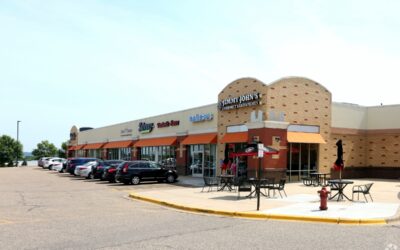Q3 2023 Market Outlook
by Matt Toczylowski
Despite lingering concerns surrounding an economic slowdown and warnings of reduced consumer spending, the U.S. retail real estate market demonstrated its resilience yet again in the third quarter of 2023. The market experienced growth in demand for retail space and positive net absorption for the tenth consecutive quarter, albeit slower than in previous quarters. New development activity remained subdued, with just under 50 million square feet of retail space being delivered through the third quarter, marking a 35% decline compared to the ten-year average. At the same time, obsolete and outdated spaces continue to be demolished and taken offline. These opposing trends combined have kept vacancy rates near historic lows and pushed rents up slightly.
Consumer spending, defying expectations in the face of higher borrowing costs, continued to drive GDP growth and the unemployment rate remained near historic lows. This economic resilience has challenged the conventional thinking of financial analysts and economists, many of whom were predicting an imminent recession just 12 months ago. However, these predictions may soon prove to be accurate, if not correctly timed. Recent reports suggest a contraction in certain sectors may be pointing to an overall slowing of the economy in the months ahead: manufacturers have documented 11 straight months of reduced production activity, residential sales have fallen dramatically for the last year, and household spending has started to decline. A multitude of additional headwinds – higher gas prices, the reintroduction of student loan payments, and rising credit card debt – also seem to indicate a looming slowdown.
A constant state of evolution has become the norm within the commercial real estate sector, but demand for physical stores in well-located centers continues to benefit the retail real estate market. High demand for small-shop space at shopping centers combined with broader market capacity constraints within the sector led to positive net absorption of 4.8 million square feet of retail space during the quarter, approximately 25% below the average of the prior two years. Furthermore, rental rate growth continued as limited availability has given retail landlords the leverage to increase asking rents, which have increased by 3.2% over the past year. On average, the starting rental rate for new leases is 5.8% higher compared to space that has been vacated in 2023 and the average rental rate for leases being renewed is up 6.1% for the year.
For the last several years, the retail real estate sector has benefited from a pronounced supply/demand imbalance. Due to the lack of new construction combined with a backlog of planned store openings, leasable square footage within retail properties is becoming more and more limited and is driving up the value of these spaces across the board. With no change in the amount of new construction in the foreseeable future, these demand fundamentals are expected to continue into 2024 and beyond.
Interest rates continued their historic run in the third quarter when the Federal Reserve raised the target rate by 25 basis points in July, a modest move in comparison to both the pace and rate of increases over the past 12 months. Despite remaining at 20-year highs, interest rates were held flat for the remainder of the quarter with indications from the Fed that the rate-hike campaign may be nearing its conclusion. While the cost of debt remains high, the stabilization of interest rates has introduced an element of certainty to the transactions market and other economic factors.
As the cost of debt has increased – and property-level debt has become nearly impossible to secure – sellers have been forced to adjust their pricing expectations accordingly. Additionally, broader capital constraints have decreased the size of the buyer pool dramatically, driving pricing down even further and causing sellers to place an enormous emphasis on a buyer’s ability to transact. After years of favoring sellers of neighborhood retail, a noticeable shift occurred in early 2023 and has gained significant momentum as the year has progressed. Furthermore, and perhaps even more encouraging for active retail buyers, pricing for these assets has returned to pre-pandemic levels.
With extremely strong fundamentals and a demonstrable track record of resilience, Neighborhood Shopping Centers have become the spotlight of the commercial real estate sector. Consumer reliance on brick-and-mortar centers and the significant role they play in delivering everyday goods and services to their surrounding communities continues to drive demand for space within these properties, which has been well documented since the onset of the pandemic.
As we enter the final quarter of the year, Baceline’s investment strategy has never been stronger, and we look forward to the continued success of convenient, accessible, and essential Neighborhood Shopping Centers across the country.
ABOUT THE AUTHOR
Matt is the Vice President of Capital Development for Baceline and has spent 13 years in business development and investor relations. After 2 years of fundraising for Baceline’s retail strategies, he has found a new passion in real estate fund asset management.



